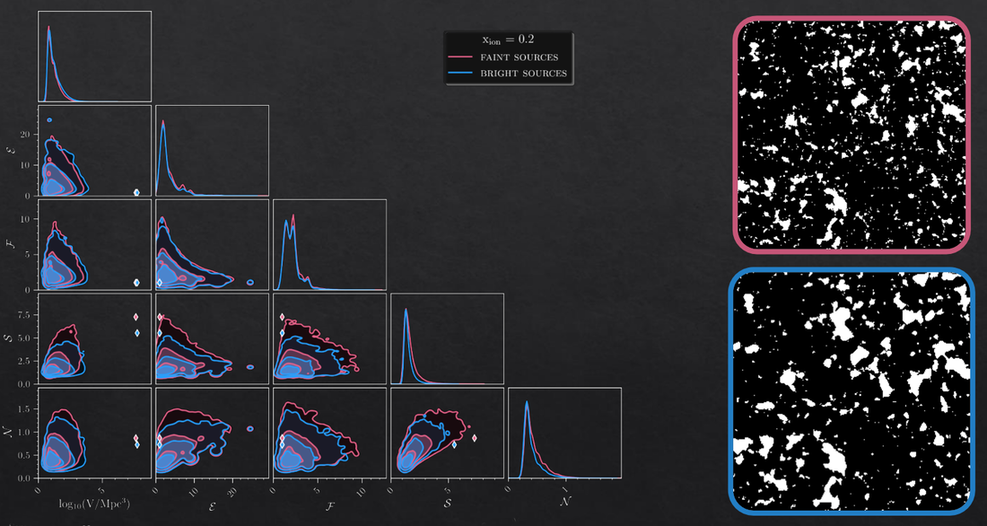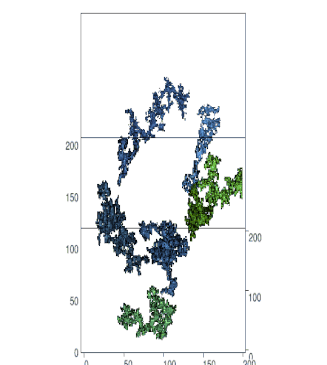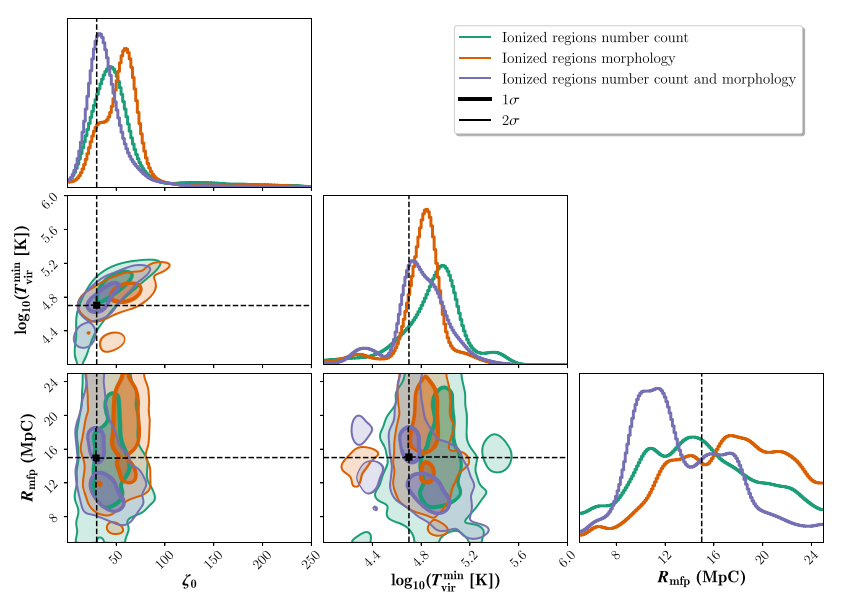Inferring the properties of the sources of Reionization using the morphology of the ionizing regions.
Gazagnes S., Koopmans L. V. E., Wilkinson M. H. F.. Inferring the properties of the sources of reionization using the morphological spectra of the ionized regions. Monthly Notices of the Royal Astronomy Society, 2021.
Context
Another way to explore the Epoch of Reionization is through 21-cm observations. Rather than focusing on the astronomical objects, we aim at observing the evolution of the neutral and ionized hydrogen in the intergalactic medium at different periods. This evolution directly tells us about the astrophysics of reionization. 21-cm is the wavelength of the neutral hydrogen transition that is observable with large radio telescopes and interferometers.
Another way to explore the Epoch of Reionization is through 21-cm observations. Rather than focusing on the astronomical objects, we aim at observing the evolution of the neutral and ionized hydrogen in the intergalactic medium at different periods. This evolution directly tells us about the astrophysics of reionization. 21-cm is the wavelength of the neutral hydrogen transition that is observable with large radio telescopes and interferometers.
Tomographic observations
|
A promising way to analyze the evolution of the neutral hydrogen is through tomographic observations. These images or volumes enable us to directly analyze the morphology of the neutral and ionized gas structures (example on the left), which reveal the properties of the underlying sources that dominated reionization. |
Analyzing the morphology of the ionized regions
Using DISCCOFAN, we can efficiently analyze the morphologicial properties of the gas regions in these images. This is what is presented below, for two simulations describing an Universe reionized by numerous faint sources, or by only a few very bright sources.

The analysis of the morphology of the ionized hydrogen gas regions in two simulations respectively depicting an universe where reionization is dominated by multiple faint sources (pink) or by fewer very bright sources (blue). The left corner plots highlights the difference in volume and morphology of the ionized regions observed. More details about the morpho
logical properties can be found in the paper.
|
Recovering the properties of the ionizing sources using tomographic observations
The paper highlights how we can use a Bayesian inference approach to recover the properties of the ionized sources using the morphological properties of the ionized regions. The Bayesian inference approach builds upon 21CMMC (Greig+15) which enables a Monte Carlo Markov Chain analysis. We tested our setup on simulated data reproducing the expected instrumental effects of the future Square Kilometer Array, a very large radio interferometer which will revolutionize the era of 21-cm observations. |
In short:
- The morphological properties of the ionized regions, extracted from 21-cm tomographic observations, provide valuable information to trace the reionization history or differences between different reionization scenarios.
- 21-cm tomographic statistics can be successfully incorporated within a Bayesian statistical inference tool to provide a robust alternative approach to other statistics such as the power spectrum.


